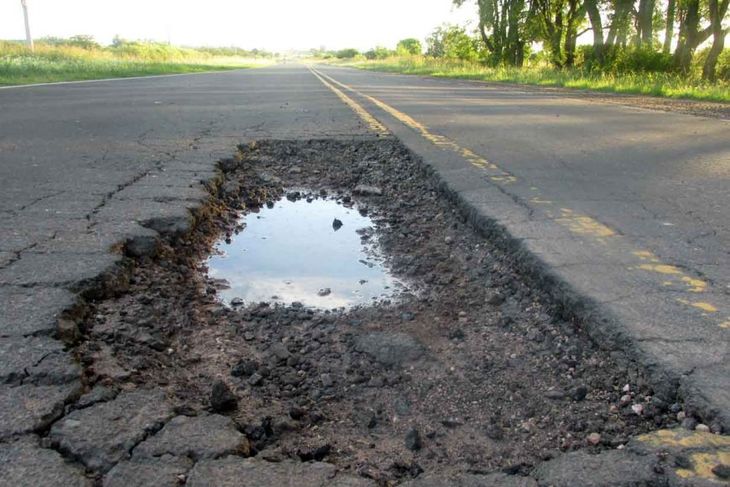One of the keys to the sustained growth of a country is the development of its private sector. The Government of Javier Milei seeks that the State ceases to be a lock for private development. Federico Sturzenegger’s minister deregulation has been repealing different norms and regulations that hinder private initiative. ANDl Economic program implemented by the Executive Power demands that companies be competitivebut, nevertheless, there are many factors that do not depend on good business will. He document of the Inter -American Development Bank (IDB) About Argentina, in the Chapter linked to the private sectormake a diagnosis about the numerous difficulties facing private capital.
The document states that The formal private sector has been going back in the country since 2010 And he considers that his competitive recovery and strengthening are fundamental for the generation of quality employment, insertion in international markets and sustainable economic growth.
This retreat from the private sector also translated into a Fall of more than 9% in the creation of new jobs since 2011. “The main reasons for this deterioration are associated with macro instability and its impact on financing access and cost; the physical and digital infrastructure deficiencies that reduce the profitability of private productive investment; the distortive regulations and taxes; the low integration to global financial and commerce markets; And the human capital gaps, ”says the document.
Milei Bid (2) .jpeg
The economic program implemented by the Executive Power demands that companies are competitive, but, nevertheless, there are many factors that do not depend on good business will.
Competitiveness
According to him Global Competitiveness Index of the Global Competitiveness Center of the International Institute for Development Management (2024)which measures the weight of state regulations and interventions in the competitiveness and well -being of citizens, In 2024 Argentina occupied the last place of this ranking, of a total of 67 economies.
It also emphasizes that, In 2022, Argentina was the country with the greatest tax burden on foreign trade in Latin America and the Caribbean (25% of the income generated by foreign trade). In terms of exports, in 2021, Argentina was the country that charged more exports withholdings (21.9% of the exported value) of the world, together with Kazakhstan.
Credit to the non -financial private sector reached 15.2% of GDP on average between 1991 and 2023well below comparators such as OECD (83%), and reaching a lean 11.9% in 2023.
It is also pointed out that Only 3% of Argentine manufacturing companies appear adopting fourth -generation smart production technologies (They combine hardware, advanced robots and 3D printers), software (Big data analysis, cloud computing, and artificial intelligence), and connectivity (the Internet of things).
In this context, lThe business innovation levels place Argentina in position 69 among 132 countries in the global index prepared by Wipoand in the eighth place in Latin America and the Caribbean.
Taxes
Argentine companies identify tax and regulatory pressure as the main obstacle. According to the World Enterprise Surveycompanies in Argentina consider that taxes and labor regulations are the greatest restrictions on their activity, and that regulatory costs to open and operate businesses in the country exceed the average of the region and the world.
In Argentina, The total productivity of the factors in agriculture registered an average of 0.88 % between 1961 and 2021, well below 1.81 % reached in Brazil. In addition, during the 2010, Argentina experienced a 0.06 %decline, while Brazil showed a 1.38 %growth.
The document also emphasizes that Argentina shows a setback in international commercial insertion, an area in which it already showed a relevant lag. The fall in the number of export companies enunciated is reflected in the loss of participation in global markets, where Argentine exports reached only 0.3% of the world total (half of 50 years ago).
Argentine companies have a decline in global value chains (CGV)where according to the World Trade Organization (WTO), in 2018, only 27% of Argentine exports were carried out through a CGV, below the averages of South America (37%).
This scenario is the reflection of the Low participation of the country in free trade agreements (ALC) lower than the average world and high protection levels. Argentina participates in a single ALC (MERCOSUR), compared to approximately 14 ALCs from other countries in the world (World Bank, 2018).
Rutaentrerios.jpg

75% of the main corridors of the national road network are in deteriorated state, warns the IDB report.
Transport
In turn, it is indicated that lThe high transport costs are a lock to the internationalization of companies. Port container export costs and waiting time have worsened in recent years, and there are considerable deficits in customs management and technology systems, as well as bureaucracy and modern few processes.
The analysis of gaps carried out by Bid Invest They show that indicators of transport infrastructure for trade and trade costs are worse than expected for the level of income of Argentina, with deficits marked in the areas of customs load, quality of routes, efficiency of trains, air transport, ports and routes. 75% of the main corridors of the national road network are in deteriorated statewhich increases logistics costs for wholesale consumption of fuel, vehicular wear and longer travel times. In turn, a poor and limited infrastructure is observed logistics integration, with only 3% of loads transporting river or sea.
IDB plans in this matter contemplate:
- Reforms will be supported to improve the regulatory quality and simplification of procedures, Facilitate private participation in the development and management of infrastructure assets and services, and simplify and open foreign trade.
- It will support the modernization of regulatory frameworks, The strengthening of institutional capacities and the improvement in the evaluation and monitoring of the mining and energy sectors, with special focus on critical minerals for the development of more efficient energy sources, and in the optimization of energy resources.
- In it electricity sector, HE will advance subsidies and fees optimization to improve fiscal sustainability and system efficiency.
- Improve the quality of transport infrastructure services and integration logistics.
- Promote Productive modernization in key strategic sectors.
Source: Ambito




